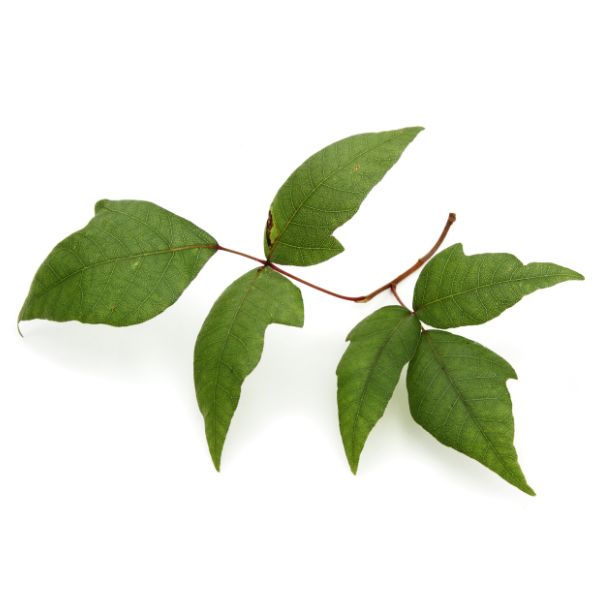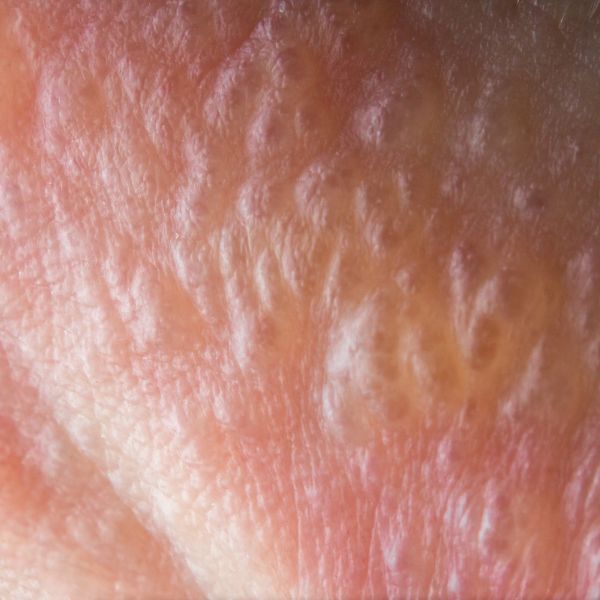A poison ivy rash takes time to heal, but these traditional medicines can soothe the burn.
Poison ivy, for many nature lovers, is an unwelcome resident of our woods, fields, and even backyards. Known scientifically as ‘Toxicodendron radicans’, this plant, with its notorious leaves of three, can cause an uncomfortable rash and, in rare cases, more serious complications. However, with the right knowledge and tools, the discomfort can be significantly reduced or prevented entirely.
By the end of this article, you will understand how the poison transfers from the plant to your skin, how to identify it, when to see a doctor, and how to use natural remedies to alleviate its effects.
Understanding Poison Ivy
Poison ivy is a plant native to North America that grows either as a vine or shrub. You might encounter it in many environments, including woodlands, fields, and urban areas. It grows in almost every part of the contiguous United States and prefers the full sunshine but may also grow in the partial sun.
What makes this plant infamous is an oily resin called urushiol that’s present in all parts of the plant. That includes the leaves, stems, and roots. When someone comes into contact with this oil, they can develop an allergic reaction known as poison ivy rash.

Identifying Poison Ivy
The adage “Leaves of three, let it be” is a helpful starting point when identifying poison ivy. The plant typically has clusters of three leaflets. However, its appearance can vary widely depending on the season, region, and specific environment. The leaves may be smooth or notched along the edges, and the plant may appear as a ground cover, a standalone bush, or a climbing vine. The leaves are typically green in the summer but can be reddish in the spring and yellow, orange, or red in the fall.
Diagnosing a Poison Ivy Rash
If you have come into contact with this plant, symptoms usually appear within 24 to 48 hours. The telltale signs of a poison ivy rash include the following:
- Intense itching
- Redness or red streaks
- Swelling
- Blisters
- Difficulty breathing if you’ve inhaled the smoke from burning poison ivy. This scenario is very dangerous and demands a trip to the emergency room.
Remember, not everyone reacts to this plant the same way, and the severity of the rash can vary from person to person. If you experience severe symptoms, especially difficulty breathing, seek medical help immediately.
Also, if you are unclear about what type of rash you have, seek medical attention for a proper diagnosis.

Herbal Remedies for Poison Ivy Rash
While over-the-counter creams and antihistamines are common treatments, numerous herbal remedies may help alleviate the symptoms of poison ivy rash. These do not “heal” the rash, per se. It goes away in time without intervention–usually in about ten to fourteen days.
NOTE: Always consult a healthcare provider before starting any herbal treatment to ensure it’s safe for you.
- Jewelweed (Impatiens capensis): Jewelweed, which often grows near poison ivy, is a traditional remedy for soothing poison ivy rash. The juice from the stems of this plant can be applied topically to the rash as soon as possible after exposure to urushiol. Studies suggest that this could be an effective solution.
- Plantain (Plantago major): Not to be confused with the fruit, the common plantain weed can alleviate the itchiness of a poison ivy rash. You can crush the leaves and apply the juice directly to the rash or make a poultice by grinding them and mixing them with water. It’s a traditional homeopathic remedy dating back to ancient Persia.
- Aloe Vera (Aloe barbadensis miller): A well-known anti-inflammatory agent for many skin conditions, aloe vera can help soothe the skin and reduce inflammation. Apply the gel directly from the leaf to the affected area.
- Chamomile (Matricaria chamomilla): Chamomile has been widely used for its soothing and anti-inflammatory properties. You can make the tea, let it cool, and apply it to the affected area using a clean cloth or cotton ball. You can apply chamomile tea bags, steeped and cooled, directly onto the rash.
- Witch Hazel (Hamamelis virginiana): Known for its anti-inflammatory properties, witch hazel may help reduce swelling and soothe the skin when applied topically. It’s typically sold as a distilled liquid to dab onto the rash with a cotton ball.
- Colloidal Oatmeal: Colloidal oatmeal has excellent soothing properties and can help relieve itching. An oatmeal bath, a paste made from oatmeal, and a little water can help soothe a poison ivy rash.
- Peppermint (Mentha x piperita): Peppermint tea, brewed, cooled, and applied topically, can provide a cooling effect. It can help soothe itchy and irritated skin caused by exposure to this plant. The menthol in peppermint leaves is a natural analgesic and anti-inflammatory agent, which can help alleviate the discomfort associated with a poison ivy rash. Although it can ease the itch, it does not directly heal the rash.
No single remedy seems to work for everyone. The chances are that your doctor will tell you these are safe (unless you have allergies) and worth a try.
Preventing Exposure to Poison Ivy Is the Best Case Scenario
The best way to avoid a poison ivy rash is to avoid contact with the plant in the first place. Your first defense line is learning to identify it and steer clear whenever possible. When you’re out in nature, consider wearing long sleeves, long pants, and closed-toe shoes to protect your skin.
If you think you’ve come into contact with poison ivy, wash your clothes and any exposed skin as soon as possible to remove the urushiol oil. Remember that the oil can also stick to pet fur, tools, and other objects. So cleaning everything exposed to the oil of the plant is important.
Is the Rash Contagious?
A common misconception about poison ivy rash is that it’s contagious or that the fluid from the blisters can spread it to other parts of the body or another person. This is not the case.
The rash, blisters, and itchiness are a reaction to the urushiol oil from the poison ivy plant. Once someone washes the oil off the skin, it can’t spread anymore. Therefore, the rash itself isn’t contagious.
However, the urushiol oil can stick to clothes, pets, or objects, which can then spread to other people if they touch these items and then touch their skin. That’s why it’s important to wash thoroughly anything that may have come into contact with poison ivy.
In short, the red, itchy rash is only “contagious” because urushiol oil can transfer from the original source (the plant) or something the oil has touched, contacting the skin. Once the oil washes away, the rash will not spread any further.
It’s also worth mentioning that the severity and exact timing of the rash can vary from person to person. It depends on individual sensitivity and the amount of urushiol exposure. Typically, symptoms appear 24 to 48 hours after exposure and can last a couple of weeks.

Final Thoughts on Using These Herbal Remedies to Ease Itching
Indeed, the reaction to poison ivy can be quite uncomfortable. However, nature gives us many natural remedies to help soothe the symptoms. It’s a wonderful reminder of the dualistic nature of the world around us. Even amidst the sting of this rash, you’ll find an herbal solution close at hand. Remember, though, these remedies may not work for everyone. In severe cases, or if you don’t see quick improvement, you should seek medical attention. Here’s to happy, itch-free adventures in nature!
- Strawberry Lemonade Recipe (no added sugar) - 03/20/2025
- Barndominiums: Weighing the pros and cons - 12/30/2024
- Ginger Orange Marmalade Recipe: Sweet, Tangy, and Just a Little Spicy - 11/09/2024


